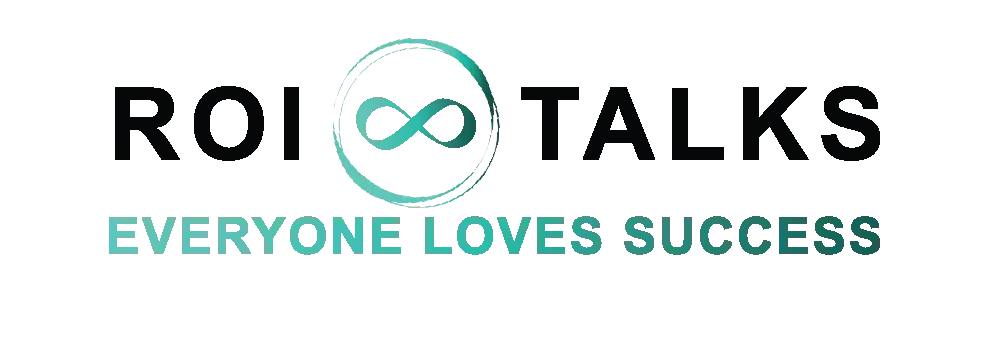Everyone Loves Success
Roi Talks Blog
A3 Thinking Explained: How One Page Can Transform Problem-Solving and Decision-Making
In every organisation, complexity can quickly bury clarity. Projects multiply, information spreads across long reports, and meetings produce more words than action. The result is confusion. Decisions slow down and people lose sight of what actually needs to be fixed.
A3 Thinking is the discipline of capturing an entire problem-solving process on one page. It forces clarity through structure and visual logic. Developed within Toyota during the 1950s as part of the Toyota Production System, A3 Thinking became one of the most influential continuous improvement methods in the world. Its purpose was simple: train people to think deeply, act precisely, and communicate clearly.
Background and Origin
A3 Thinking takes its name from the European A3 paper size (approximately 11 x 17 inches). Toyota engineers were required to summarise complex production or quality issues on a single sheet of paper. This encouraged them to investigate root causes, evaluate options, and present their reasoning visually.
The A3 approach was later documented by experts such as Dr. Jeffrey Liker in The Toyota Way and John Shook in Managing to Learn, who helped translate Toyota’s internal practices for the wider business world.
The result is now a global framework for clear problem solving and cross-functional alignment. Whether in manufacturing, healthcare, or corporate leadership, the essence of A3 Thinking remains the same: explain the story of a problem, its analysis, the countermeasures, and the plan on one concise page.
What A3 Thinking Does
The method guides teams through six logical sections:
Background – Describe what is happening and why the issue matters.
Problem – State the specific gap between current and desired performance.
Root Cause – Analyse why the problem exists using evidence and tools such as the 5 Whys.
Solutions – Identify actions or countermeasures that close the gap.
Plan – Define who will do what and by when.
Follow Up – Show how results will be reviewed and lessons shared.
The one-page format prevents overthinking. It demands precision and invites collaboration. The A3 is not a form to fill; it is a thinking process made visible.
Examples of A3 Thinking in Action
1. Operations Efficiency
A logistics company used A3 Thinking to improve on-time delivery.
Background: Customer complaints and delayed shipments affecting revenue.
Problem: Deliveries were missing the cut-off time by an average of three hours.
Root Cause: Poor route planning and outdated scheduling software.
Solutions: Introduce a new digital scheduling tool and revise shift patterns.
Plan: Pilot the changes across two regions and monitor results weekly.
Follow Up: Monthly progress review and adjustment meetings.
Result: On-time delivery performance improved by 22 percent within two months.
2. Human Resources and Retention
An HR department applied A3 Thinking to reduce employee turnover.
Background: Data showed resignations had risen over six months.
Problem: Mid-level employees were leaving during project transitions.
Root Cause: Lack of career clarity and inconsistent feedback systems.
Solutions: Launch structured stay interviews and define growth pathways.
Plan: HR to coordinate quarterly development reviews with department heads.
Follow Up: Track retention and engagement scores quarterly.
Result: Employee retention increased and engagement scores rose significantly.
3. Customer Experience Improvement
A hospitality group used A3 Thinking to enhance guest satisfaction.
Background: Surveys revealed inconsistent service standards across locations.
Problem: Slow response times and unclear accountability in front-line service.
Root Cause: Inconsistent training and lack of clear delegation structures.
Solutions: Refresh service training and establish team-level accountability.
Plan: Implement new service protocols in all branches within 60 days.
Follow Up: Monthly service performance reports and feedback tracking.
Result: Guest satisfaction scores improved steadily across all locations.
Why A3 Thinking Matters for Tactical Intelligence
A3 Thinking sits at the centre of Tactical Intelligence because it transforms reaction into reflection. It replaces emotional debate with structured evidence. When time pressure rises, the A3 sheet becomes a calm anchor that guides decisions logically.
It helps leaders:
Focus on the real issue instead of surface symptoms.
Align teams quickly because the plan is visible and concise.
Communicate complex ideas in a single, understandable format.
In short, it converts chaos into clarity.
Implementing A3 Thinking
Start by identifying one recurring problem in your organisation. Gather the people closest to it and map the six sections together. Keep the language factual.
Use data where possible. Display the completed A3 sheet publicly so that progress is transparent. Review it weekly until the problem is resolved or the system is improved.
This consistent practice develops a culture of clarity. Over time, people begin to approach every challenge with the same mindset: define, analyse, act, review.
The Power of One Page Clarity
In an age where information is scattered and meetings are endless, A3 Thinking reminds us that focus creates speed. A single, well-reasoned page can do more to align a team than any long report or presentation.
Toyota used it to build one of the most respected production systems in history. Today, organisations across industries use it to bring structure to their decision-making and learning.
A3 Thinking is not paperwork. It is a way of thinking. It is the discipline of calm clarity made visible.
This article is part of the Tactical Intelligence – Creative Problem Solving and Decision Making series. To learn how A3 Thinking and other clarity frameworks can strengthen decision-making in your organisation, please contact us.

ROI TALKS™
Marina Plaza - Office 1004 -1006
Dubai Marina, Dubai, UAE